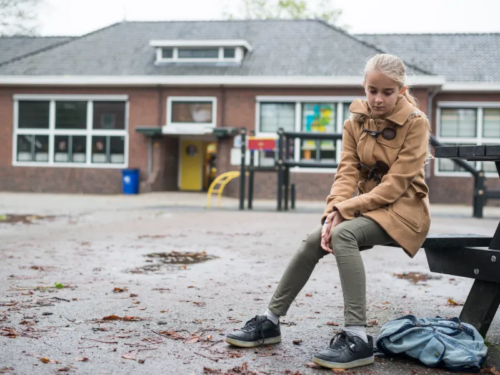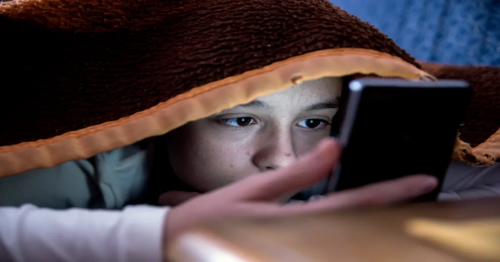
Table of Contents
How To Heal Your Inner Child
Written By: Charlie Health Editorial Team

Clinically Reviewed By: Dr. Don Gasparini
May 25, 2023
8 min.
Your negative childhood experiences could still be weighing you down today. Here’s how to do inner child work to heal your inner child.
Learn more about our Clinical Review Process
Table of Contents
The experiences that we have as children –– both bad and good –– can significantly impact our lives as we grow up. Negative or traumatic childhood experiences tend to stick with us. The idea that we carry this wounded younger self within our adult self is known as the inner child. Even though you may not be consciously aware of the pain your inner child is carrying, it may be impacting your mental health and relationships.
Many people who experienced hardships growing up have a “wounded inner child” that needs healing. This is where inner child work comes in –– the practice of healing your inner child. Healing your wounded inner child can help you thrive as an adult.
8 steps toward healing your inner child
Healing your inner child can be life-changing as you move forward. Once you’ve addressed childhood trauma and your inner child wounds, you may experience improved mental health, overall well-being, and healthier relationships.
Here are eight tips for how to heal your inner child.
1. Get in touch with your inner child
The first step is connecting with your inner child. Inner child work requires you to get very introspective, diving deep into your past. You want to create a safe space where you can interact with your inner child and offer comfort and reassurance that you may not have received as a kid. Do this when you have plenty of time to be alone, where you won’t be bothered by others.
To connect with your inner child, you may visualize yourself as a kid and speak to your younger self as you are now. There are also guided meditations available online to help you get in the zone. Or, if you need a visual aid, you may choose to look at a photo of yourself as a child. Try to tap into the emotions that your younger self felt during childhood. When you speak to your inner child, do so with compassion, reminding them that they are safe and supported now.
Join the Charlie Health Library
Get mental health updates, research, insights, and resources directly to your inbox.
You can unsubscribe anytime.
2. Practice self-compassion
Self-compassion is crucial during the process of inner child work. When you were young, you may not have received the non-judgemental compassion, love, and care that you needed. Perhaps you even treated yourself in judgemental and unkind ways as you grew up, reinforcing negative beliefs about yourself that others may have pushed on you.
Now that you are older and have more knowledge, it’s time to treat your inner child with love and compassion. Learning to be kinder and gentler to yourself is an important part of healing your wounded inner child. When you speak to your inner child, approach them in a caring and loving way. Validate your inner child’s struggles and the pain they felt, show them empathy, and tell them what you wish you could have heard back then.
Additionally, you’ll want to work towards treating yourself with the same love and understanding that you would give to your child self or a kid in your life now, such as a son, daughter, niece, nephew, or cousin. This may help put things in perspective for you.
3. Allow yourself to feel
You may have grown up stifling your emotions, perhaps being told that crying is a sign of weakness or that you need to always appear to have it all together. But now, you have the power to choose to feel your emotions. Remind yourself that it is safe and healthy to feel and express these emotions. Allow yourself to feel angry, sad, or cry. Keeping your feelings bottled up will do you no good. If you truly want to heal your inner child, you have to allow yourself to feel any and all emotions that pop up.
While doing inner child work, you may also notice physical sensations popping up in your body. You may notice what you’re feeling in your body, whether it’s a tightness in your chest or a knot in your stomach.
Inner child work can bring up some painful and difficult emotions, especially if there is trauma involved in your childhood or you have had adverse childhood experiences (ACEs). You may be opening up emotional wounds that haven’t been addressed for years. Understand that doing this work won’t always be pleasant or easy, but it will be worth it. Working alongside a therapist for inner child work is highly recommended if you have unresolved childhood trauma.
4. Identify key events in your life
When you start connecting with your inner child, some past painful experiences may instantly jump out at you. For example, you might have a strong awareness of traumatic events you have been carrying with you throughout your life. It can help to take some time to identify childhood memories and key events in your life where your younger self felt scared, unsafe, invalidated, or unloved. Make a timeline or a list of these events to reference. This will show you the hard times you might have stuffed away and never fully addressed.
For example, were there specific times you were abused? Neglected? Bullied?
Once you identify these defining past experiences, you can take some time to reflect on them and the feelings that these events resulted in. Connect with your inner child at the time of the traumatic event. How did they feel in this moment and after it? What emotions came up? What beliefs did they have? Did the grown-ups in their life react inappropriately? From here, you can work to understand how these events affected you, see the significance of them, and realize how they’ve stuck with you for all these years.
Having a list or timeline like this is also helpful to share with a mental health professional as a starting point for key events you need to discuss.

5. Draw links between past and present
When looking back at your childhood memories and experiences, try to see if you can draw a connection between how you felt then and how you feel now. For example, if you were bullied about your appearance or your performance in school when you were younger, do you still find yourself feeding yourself the same messages that the bullies back then passed along to you? Or, if you were a victim of sexual abuse or physical abuse as a child, do you still find yourself carrying any of that shame or pain, letting it get in the way of your adult relationships?
Sometimes there will be clear links between past and present, but other times you may have to dig a little deeper. See if you notice similarities between how your younger self felt during difficult times and how you feel now. You might have even developed negative thought patterns or behaviors in response to painful childhood experiences. Sometimes, these patterns you developed as a kid might stick with you as you get older, and inner child work can help you become aware of them and change them.
Alternatively, when you’re feeling triggered or very upset in a certain situation, you may want to take a step back and ask yourself if you can trace this emotion back to an earlier painful experience. It might be your inner child and unhealed wounds reacting to the current situation.
Again, a therapist can be very helpful here if you are having trouble drawing parallels between your unresolved childhood trauma and your life now.
6. Challenge negative thoughts
Inner child work involves “unlearning” things. You may realize you have a lot of automatic thoughts that aren’t very kind. Many negative beliefs about ourselves are formed in childhood and can continue to impact us as adults. Identify any negative beliefs that you catch yourself thinking about as you go about your day at school, work, or home. These may be beliefs that adults in your life ingrained in you when you were little. Some common negative thoughts linked to inner child wounds include “I’m not good enough” or “I’m unlovable.”
Work towards identifying these negative, unhelpful thoughts. Once you can notice and identify these thoughts, you can then work on challenging the distorted negative thoughts with more realistic and positive thinking.
Therapy is very helpful for challenging your negative automatic thoughts and unhelpful beliefs, paving the way for healthier thinking.
Do you need more support with
your mental health?
Charlie Health can help.
7. Try journaling
Journaling is a great tool for connecting with your inner child. It is a safe and private tool for you to express and process difficult emotions and troubling memories. Putting pen to paper and writing about your experiences can help you slow down your thinking and gain even stronger awareness and a deeper understanding of your feelings back then and the present day.
One idea is to journal from the point of view of your younger self. Write the journal entry as if you are in the moment as a kid. Explore any of the feelings and beliefs you felt then. Again, allow yourself to experience any emotions that come up.
Another idea is to write a letter to your younger self as your present-day self. This is a great chance to practice self-compassion. You can tell your child self exactly what they needed to hear at that moment. What do you wish someone would have said to you? Offer comfort, validation, and support as you write to your wounded inner child.
By expressing love and compassion towards yourself and your child self, you can work on healing emotional wounds of the past and move forward in a healthier way.
8. Seek professional mental health help
While it is possible to do some inner child work on your own, working with a mental health professional can be extremely beneficial. Especially in cases of childhood trauma, it is important to work through this with a therapist who can help you feel safe while you revisit the trauma.
The safest and most effective way to heal your inner child is alongside a trauma-informed mental health professional. Many types of therapy are useful for trauma. Some examples of trauma therapy include:
- Cognitive behavioral therapy (CBT)
- Trauma-focused cognitive behavioral therapy (TF-CBT)
- Prolonged exposure therapy
- Eye movement desensitization and reprocessing (EMDR)
A therapist can help you identify patterns and links that you might not be able to see on your own and help you determine healthier ways of thinking. Furthermore, your therapist can help you spot signs that your inner child is healing, encouraging you to keep going and putting in this hard work.
How Charlie Health can help
If you or a loved one are working towards healing your inner child and addressing childhood trauma, Charlie Health is here to help. Charlie Health’s virtual Intensive Outpatient Program (IOP) provides mental health treatment for people dealing with serious mental health conditions, including both the emotional and physical symptoms of grief. Our expert clinicians incorporate evidence-based therapies into individual counseling, family therapy, and group sessions. With support, managing your mental health and healing from grief is possible. Fill out the form below or give us a call to start healing today.
References
https://www.ncbi.nlm.nih.gov/pmc/articles/PMC5844049/
https://www.ncbi.nlm.nih.gov/pmc/articles/PMC4912602/
https://psychotherapy.psychiatryonline.org/doi/10.1176/appi.psychotherapy.20180008
https://cptsdfoundation.org/2020/07/13/the-wounded-inner-child/
https://cptsdfoundation.org/2020/07/20/healing-trauma-through-inner-child-work/





